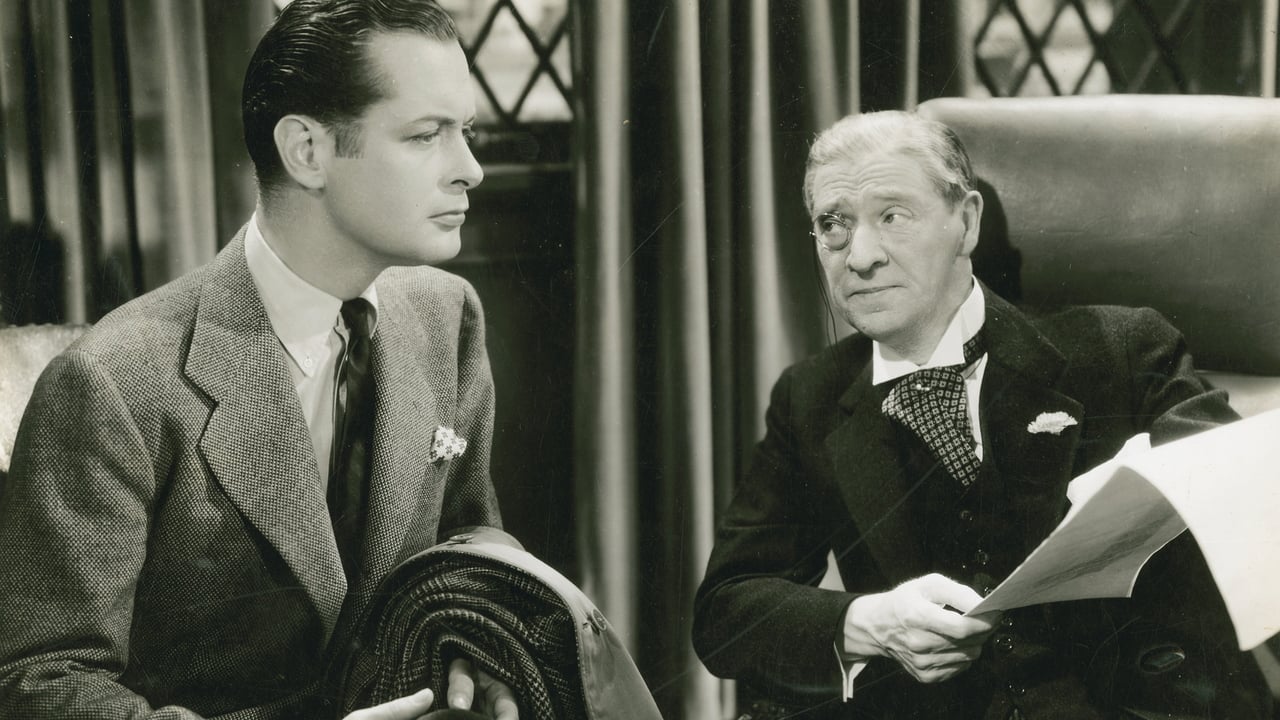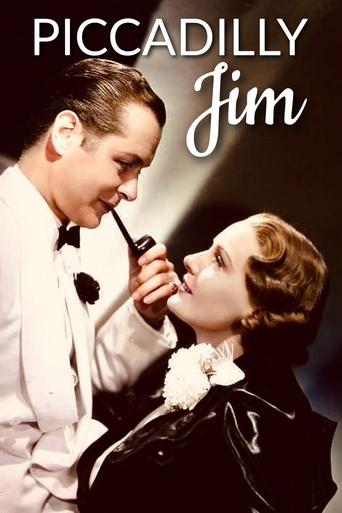

P.G. Wodehouse is best remembered for his creation of the unflappable butler Jeeves in those Bertie Wooster stories. In Piccadilly Jim, Wodehouse creates another butler character Bayliss here played by the slightly more flappable Eric Blore who does save the situation for his employer Robert Montgomery the notorious London cartoonist Piccadilly Jim. Of course not quite in the way he intended.Piccadilly Jim is your very typical Wodehouse story, a comedy of manners and satire of the upper and middle classes. In this one however we Americans get a bit of a going over for our pretensions and crass commercialism in the persons of the Pett family.With whom Montgomery and his father Frank Morgan get involved, Montgomery in an effort to help Morgan. It seems as though Frank would like to settle down and marry Billie Burke, but the grande dame of the family, aunt Cora Witherspoon won't hear of it. Montgomery dives into the situation and romances sister Madge Evans who is about to marry a title in the person of dull and dishwater Ralph Forbes. But his instincts as a cartoonist take over and he finds a lot of material for satire in the doings of the Pett family. So much so that they feel they have to leave London where they are vacationing and had back across the pond. Of course Montgomery, Morgan, and Blore follow along on the same ocean liner.One thing about Piccadilly Jim is that it is so perfectly cast. Just the names of the cast and the roles described and you know exactly what you are in for. This film is a great example of the studio contract system at its best, the studio had all or most of these people under contract to MGM and they just got dropped into roles perfectly suited to the image that MGM had created for them.Robert Montgomery though American with his stage training and diction fits right into a Wodehouse English role without missing a beat. And Wodehouse's wit and eye for characters and caricature is as sharp as ever. Piccadilly Jim holds up remarkably well after over 70 years and the film is a great introduction to P.G. Wodehouse.
... View MoreWhen the leading lady (Madge Evans) must explain why she likes her suitor (Ralph Forbes)and must contrast that attitude with her feelings for Robert Montgomery, you know the film is in trouble. Montgomery can say there's "electricity" between himself and Evans, but that spark is not transmitted to celluloid. And that is too bad, because the film is wittier -- per Wodehouse -- and better-acted than many films of the era. But Evans' loves and likings must be verbalized. The energy is simply not on the screen, only in the script. She is beautiful, though. She needed a different character -- more remote, more mysterious, more fearful of love. And then, maybe... Blore is wonderful, and lights up every scene he is in, as the butler who knows his Shakespere better than the ham, Frank Morgan. But this is one of Morgan's best roles. His only triumph, apparently, was as Osric, in Cedar Rapids. Now Osric is the foppish courtier at the end of 'Hamlet' -- hardly the role of a lifetime. But Morgan disguises himself as "Count Osric of Denmark" in order to infiltrate the family of his beloved (Billy Burke) and turns his failure as actor into personal success. It is a neat touch. Burke's flighty flutiness is hardly used in the film, but she does have a funny line about remembering how painful youth was. The Morgan-Burke romance is intended as a foil for the Montgomery-Evans courtship and that would have worked well had the main plot had more chemistry.
... View MoreSupporting players Cora Witherspoon and Eric Blore steal the show in this funny 1936 film.A guy, (Robert Montgomery)who is a cartoonist and his father, a Shakespearian actor, who hasn't played Shakespeare in 20 years, (a very funny Frank Morgan) vie for the attention of two women.Morgan is after Billie Burke, from a wealthy family, who is a plain ordinary lady. The trouble is her sister, Nesta, played with an aristocratic humor by Witherspoon. She sees Morgan as a fortune hunter and tries to end the liaison. Montgomery starts a cartoon series based on the family which is soon a hit throughout England. Little does her know that the girl he is after is the niece of Witherspoon.There's a ship-board romance to America. Morgan dresses up as a European aristocrat to impress Witherspoon and her family. Further complications leads him to have the butler, Blore, play his father.The ending is predictable but it's funny to see how things entangle in this screwball comedy of 1936.
... View MoreI am becoming a Robert Montgomery fan as I see more of his movies. As an actor who made most of his films in the 30's he is largely forgotten today compared with actors who kept making films into the fifties like Cary Grant and Jimmy Stewart. However he is a fine natural actor, a very good comedian and an altogether charming leading man. His specialty is the warm-hearted, well-mannered and slightly tipsy gentleman in evening clothes and he doesn't disappoint in this film. He pursues the girl with an admirable single-mindedness and belief in the inevitability of her eventual reciprocation.The film has other pleasures, most notably the presence of Eric Blore as the gentleman's gentleman. This delightful actor is one of the great funny-men of this era. Also in fine form are Frank Morgan, as the ham actor who impersonates a Hungarian Count, Cora Witherspoon as an overbearing society woman, Billy Burke, Grant Mitchell and Robert Benchley as, what else, a lush. Truly a smorgasbord of character acting.The plot is interesting enough to hold our attention and the little snippets of caricature and thirties-style newspaper comic strip are fun.The only slight disappointment is Madge Evans as the ingénue, who plays it straight and is no match for the sublime Montgomery. All in all an enjoyable interlude.
... View More